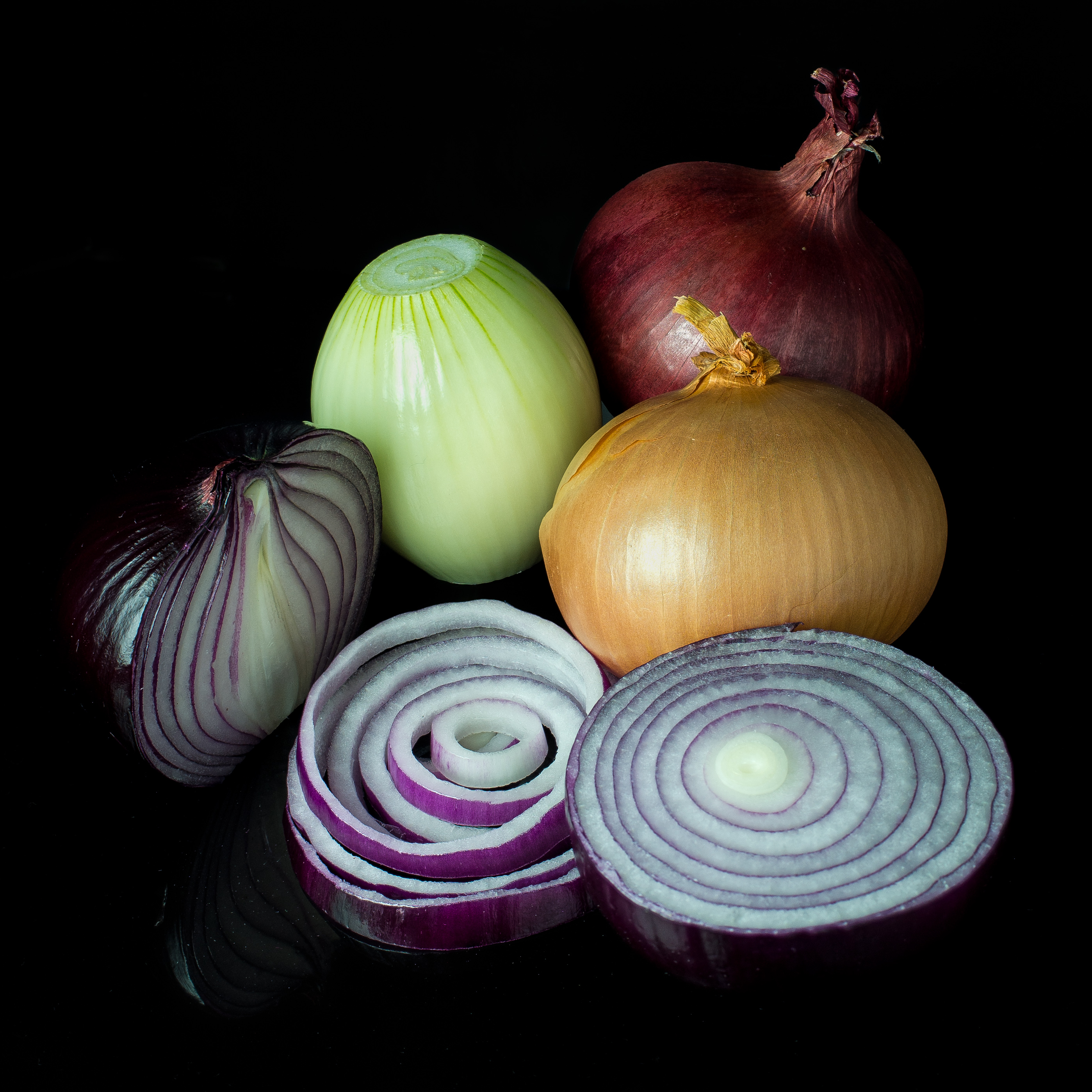Food
Knowing how to slice, cook your onions makes big difference
Back in the ’80s and ’90s, I used to work behind the scenes with Julia Child during her appearances on “Good Morning America.” It was my job to prepare the food she would put before the cameras.
Once, when I knew in advance that I couldn’t be there for one of her upcoming appearances, I invited a pal of min—a culinary professional—to try out for the gig. We prepped the food as usual, and at the end of the day I thought my friend had done a dandy job. Julia flatly disagreed and said she wouldn’t hire her. I was flabbergasted. “Why not?” I asked.
“Because she sliced the onions the wrong way,” Julia replied.
Yikes! I simply hadn’t focused on how my friend sliced the onions. I didn’t think this detail was that important. But all these years later, I realize Julia was right. Exactly how you slice an onion makes a difference. So does how you cook it.
Everyone knows that chopping onions can literally bring tears to your eyes. Here’s why. When an onion’s cells are ruptured, they give off pungent sulfur fumes. The more roughly an onion is treated—such as when it is chopped with a dull knife or pulsed in a food processor—the more fumes it gives off.
There are any number of quaint folk remedies for this problem. Put a piece of bread in your mouth while you’re chopping. Do your chopping near a running faucet. And so on. None of them works.
What does work—at least when you’re chopping up a lot of onions—is wearing onion goggles. Modeled on welder’s goggles, these babies prevent the onion’s fumes from reaching your eyes. But the best everyday tactic is to chop or slice the onion quickly and with a very sharp knife. Chilling the onion for an hour or two ahead of time also is a good idea.
Having managed to blunt an onion’s ability to bring you to tears, let’s turn to the correct way to slice one, a la Julia. Lengthwise, not crosswise, is the way to roll. Cutting an onion in half through the root end and then slicing it from stem to stern stimulates far fewer sulfur fumes.
These lengthwise slices also happen to hold together much better than crosscut slices, precisely because you’ve sliced with the grain instead of against it. This is especially important for a dish like onion soup, when you want the slices to maintain their shape.
Finally, we come to how to cook an onion, which affects not just the flavour of the onion, but of the whole dish. If you throw it into a hot pan and quickly saute it over high heat, the onion and the dish it’s added to will be bland. If you do it slowly over low heat, you’ll maximize the onion’s flavour.
All of these tips apply to making my Alsatian onion pie. The French call it tarte flambee. The Germans call it Flammkuchen. It strikes me as more like a pizza than anything else. I tasted it for the first time on a river cruise in France a couple years ago, and I was really knocked out by its combination of simplicity and big flavour. Accompanied by a fresh salad, this treat would make the perfect light supper for the beginning of spring.
Alsatian onion pie
Start to finish: 1 hour 15 minutes
Makes three 10- to 12-inch pizzas
6 ounces bacon, thinly sliced crosswise
4 cups thinly sliced yellow onion
Kosher salt and ground black pepper
8 ounces creme fraiche
1 large egg yolk
Pinch nutmeg
1 1/2-pound ball purchased pizza dough, room temperature
3 ounces coarsely grated Gruyere cheese
In a large skillet over medium, cook the bacon, stirring, until it starts to brown, 5 to 8 minutes. Transfer the bacon to paper towels to drain and pour off all but 2 tablespoons of the fat from the skillet. Return the skillet to medium heat and add the onions. Cook, covered, stirring occasionally, until very soft, about 10 minutes. Remove the cover and cook, stirring occasionally, until golden, about another 30 minutes. Season with salt and pepper, then set aside.
Heat the oven to 500 F. Arrange one of the oven racks on the oven’s bottom shelf.
In a small bowl, stir together the creme fraiche, egg yolk, nutmeg and a pinch each of salt and pepper.
Divide the dough into 3 even pieces. On a lightly oiled surface, roll out each piece into a 10-by-12-inch rectangle about 1/8-inch thick. Transfer each to a 15-by-17-inch sheet of kitchen parchment. The dough may shrink and lose its shape. If so, roll it again on the parchment.
One at a time, transfer each piece of parchment and dough to a bak sheet (unless your oven can fit 2 sheets on one shelf, you’ll need to bake these one at a time). Spread a third of the creme fraiche mixture over the piece of dough on the baking sheet, then top with a third of the onions and bacon. Sprinkle with a third of the cheese, then bake on the oven’s lower shelf for 10 minutes, or until the crust is crisp. Repeat with remaining dough and toppings. Serve right away.
Nutrition information per half pizza: 640 calories; 310 calories from fat (48 per cent of total calories); 35 g fat (16 g saturated; 0 g trans fats); 120 mg cholesterol; 1260 mg sodium; 60 g carbohydrate; 4 g fiber; 6 g sugar; 17 g protein.






















